Corsair AX1500i Power Supply Review
by E. Fylladitakis on September 11, 2014 5:00 AM EST- Posted in
- Cases/Cooling/PSUs
- Corsair
- PSUs
- 1500W
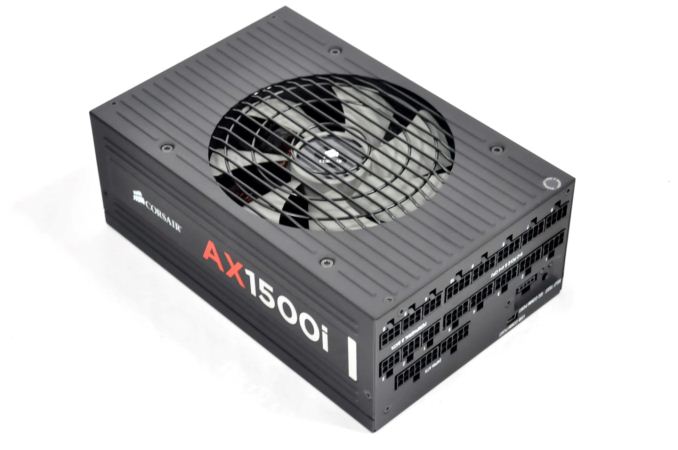
Introduction
A decade ago, the 80 Plus program was introduced with the aim of promoting the development of more efficient and environmentally friendly computer power supplies units (PSUs). When it was officially included in the Energy Star 4.0 specification requirements in 2007, the program really took off, with every manufacturer who had not already certified their units sprinting to do so.
In 2008, it was already easy and fairly cheap to produce 80 Plus certified PSUs, making the original 80 Plus program somewhat obsolete, but the original standard was revised to include differing tiers of efficiency, starting with the 80 Plus Bronze, Silver, and Gold certifications. Two more levels, Platinum and Titanium, were introduced later. These "badges of honor" drove the manufacturers to funnel money into research in order to create better and more efficient units, and they significantly helped their marketing departments as well. Today, users can easily find 80 Plus Gold certified units at very reasonable prices for their home computers, and 80 Plus Titanium certified units for servers have already been available for a couple of years.
The race for more powerful and more efficient PSUs continues to this date, as every manufacturer is trying to get ahead of the competition by either developing more efficient units, or by producing cheaper units with the same level of efficiency. Today we will look at Corsair's attempt to show us who's the true king of the hill, as we are going to review the AX1500i, a fully digital 1500 Watts PSU with an 80 Plus Titanium certification and an impressive list of features.
The AX1500i is one of the first 80 Plus Titanium certified consumer PSUs, as well as one of the most powerful units currently available. These facts do help explain the rather insane retail price of $450, perhaps, but there's no question that this is a very niche product. With such a price tag and power output, the AX1500i is intended only for very advanced users and hardcore gamers who are willing to pay as much as a small home/office PC costs just to get the best PSU possible. However, this segment of the market is very demanding as well – does the Corsair AX1500i has what it takes to please such users? We will find out in this review.
| Power specifications ( Rated @ 50 °C) | |||||
| AC INPUT | 100-240 VAC, 50-60 Hz | ||||
| RAIL | +3.3V | +5V | +12V | +5Vsb | -12V |
| MAX OUTPUT | 30A | 30A | 125A | 3.5A | 0.8A |
| 180W | 1500W | 17.5W | 9.6W | ||
| TOTAL | 1500W | ||||
Packaging and bundle
The black, serious cardboard box of the AX1500i somehow hints at the proportions of the power supply. It is not deeper or taller than typical PSU packaging, but it is much wider. Information on the most vital features and performance aspects of the AX1500i can be found on the rear of the box.
For a product of this class, the bundle can definitely be described as substandard. There is only a set of four black screws, a case badge, and a C19 power cable. Note that the vast majority of consumer-grade PSUs are making use of C13 cables; C19 cables are more commonly found on servers and larger electronic appliances. Beyond the above, there are no cable ties, no cable straps, and no other accessories whatsoever included with the AX1500i, which is very strange for a product with such a price tag.
Every single cable of the AX1500i, including the 24-pin ATX cable, is a flat, ribbon-like cable with no sleeving. All of the connectors and wires are black, making them perfect for those builders that they do not want their PSU cables to stand out visually.


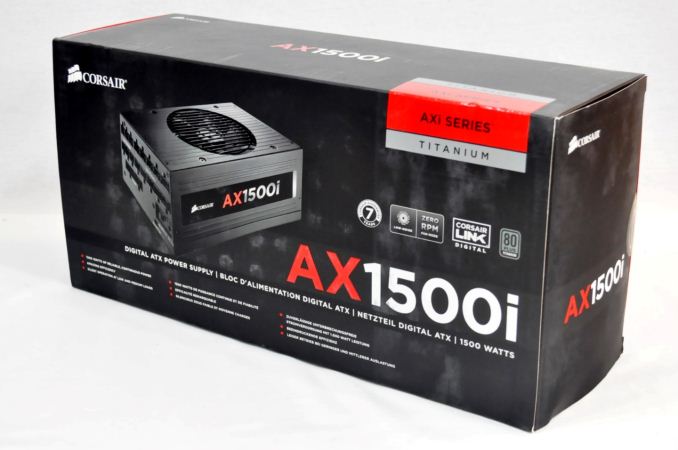
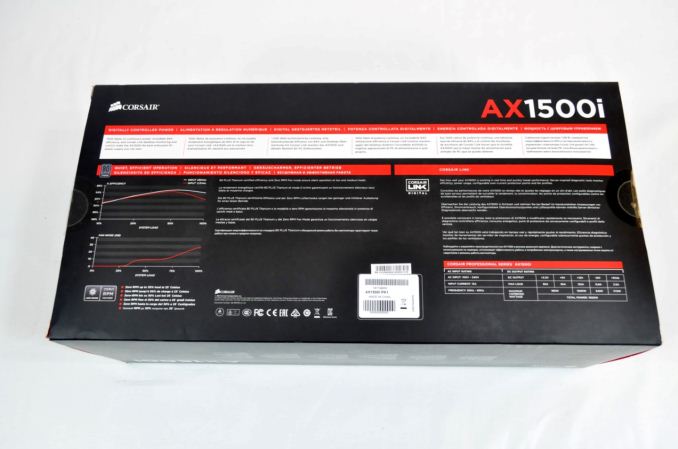
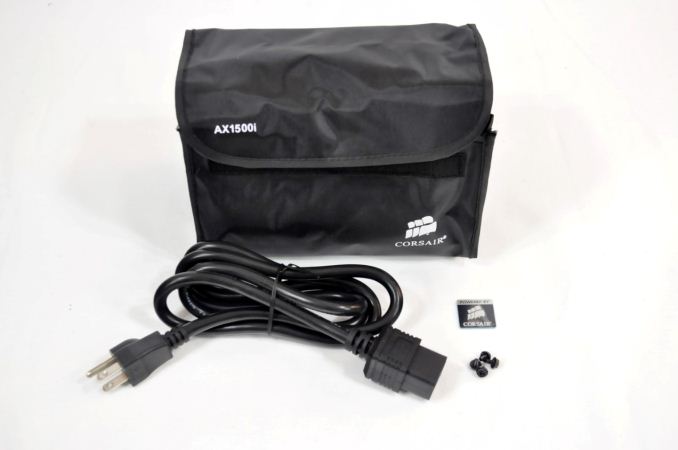
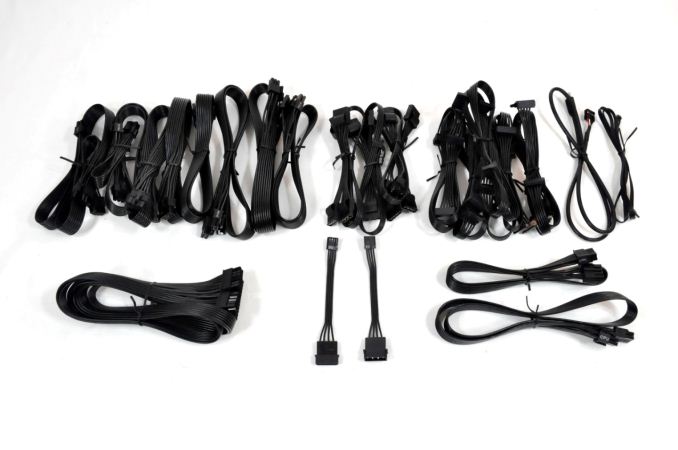








55 Comments
View All Comments
CrazyElf - Thursday, September 11, 2014 - link
It will mostly be of use for people who are using quadruple GPU configurations or highly overclocked triple GPU configurations.But yes, as the article notes, it's a niche product and arguably an overpriced product for what it offers. We'll see what similar 1500-1600W PSUs offer by other manufacturers in the coming months.
Vatharian - Thursday, September 11, 2014 - link
Good, you mentioned, almost. I've build recently dual cpu (using Supermicro X9DRG-QF), 5 GPU (Titan black) workstation, water cooled (for sake of efficiency and longevity, not wow factor), and it refused to boot on Corsair AX1200i, switched to dual Seasonic X1250, and it peaks around 2.1kW from wall (on 230V).piroroadkill - Thursday, September 11, 2014 - link
Holy shit. Now that's baller.mapesdhs - Thursday, September 11, 2014 - link
And I thought my quad-580 3930K was nuts. :DCool dude!!
Ian.
Chrispy_ - Monday, September 15, 2014 - link
Assuming you're running an SSI EEB board, you should really be using server-grade EPS supplies rather than this consumer junk. Drawing 2.1kW from the wall is all the evidence you should need for this! ;)Barilla - Thursday, September 11, 2014 - link
80+ and 80+ titanium are two different things. And there are actually some people that need this kind of power, although not many.Sabresiberian - Thursday, September 11, 2014 - link
You know what is really useless? Comments about how a product is useless.They do more to show how limited the imaginations of the authors (of such comments) are than anything else.
petteyg359 - Sunday, February 15, 2015 - link
Just because you don't give a crap about efficiency doesn't mean others won't. Going from 84% to 92% efficiency on a 500W load is over 1.2 kWh saved every day. At $0.15 per KWh, the PSU will more than pay for itself within the warranty period.Pissedoffyouth - Thursday, September 11, 2014 - link
As a 220v user (New Zealand), due to higher efficiency should we also see lower temperatures?DanNeely - Thursday, September 11, 2014 - link
Slightly. 220v is generally 1-2% more efficient than 110; meaning at full load you'd have 15-30W lower losses being converted into heat.